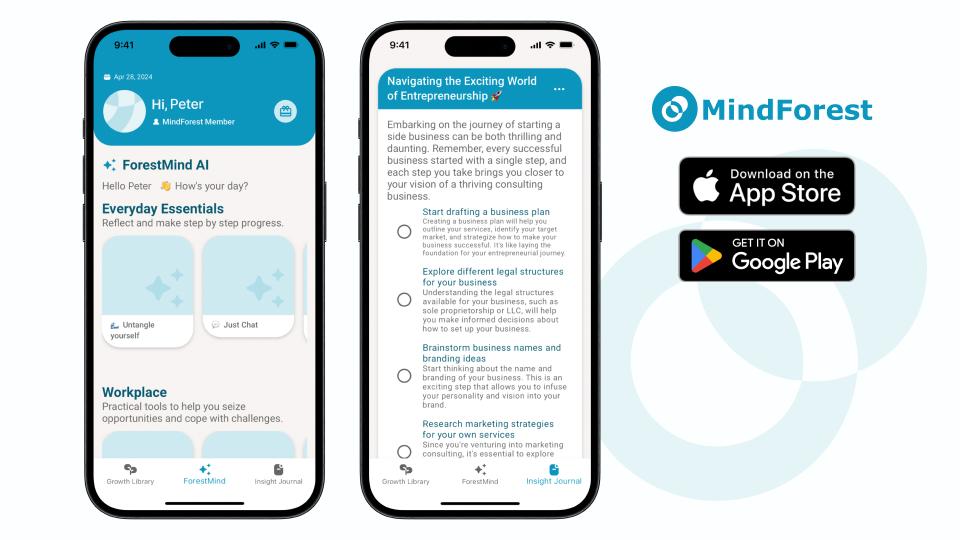
Ghosting and Avoidant Behaviour: Why We Pull Away and 3 Ways to Heal from It
Have you ever experienced ghosting? The two of you were chatting happily the night before, and the next day the person suddenly disappears, never replying again?
At the start of a relationship, passion is strong, and both partners feel happy and excited. Over time, however, this excitement fades, and they may begin to feel bored, questioning their love. Gary Chapman, a marriage counsellor, developed the “5 Love Languages” theory to help improve couple communication by teaching them how to express love in ways that meet each other’s emotional needs.

At the start of a relationship, passion is strong, and both partners feel happy and excited. Over time, however, this excitement fades, and they may begin to feel bored, questioning their love. According to the “Triangular Theory of Love,” passion is just one part of love, alongside intimacy and commitment. When the passion fades, couple communication becomes key in keeping the relationship healthy. Many couples feel frustrated, thinking they’ve done all they can, yet their partner may not feel loved. Gary Chapman, a marriage counsellor, developed the “5 Love Languages” theory to help improve couple communication by teaching them how to express love in ways that meet each other’s emotional needs.
In 1992, Gary Chapman introduced five love languages, helping couples improve communication by understanding how their partner expresses and receives love. Since people have different love languages, understanding your partner’s primary one can enhance couple communication and emotional connection. Chapman defines love in three ways: as a feeling (passion), an attitude (commitment), and an emotional need (intimacy). He uses the metaphor of a “love tank” to explain that effective couple communication fills this tank when love is expressed in the right way. The five love languages are: Quality Time, Words of Affirmation, Receiving Gifts, Acts of Service, and Physical Touch (Chapman, 1995).
For people whose love language is Quality Time, they value undivided attention and meaningful interaction. Effective couple communication for these individuals involves spending focused time together, free from distractions, to feel understood and connected. They dislike multitasking during shared moments. If your partner values Quality Time, planning dedicated moments for deep conversations or enjoyable activities strengthens your bond.
Those who value Words of Affirmation appreciate verbal support, compliments, and encouragement. For them, couple communication is essential in building trust through positive, affirming language. Cold or critical remarks can damage the relationship. If this is your partner’s love language, regularly offering encouraging words or writing thoughtful notes can improve your communication and make them feel loved.
People who value Receiving Gifts see them as meaningful tokens of love. Good couple communication here involves recognising their emotional connection to thoughtful gestures, regardless of cost. If your partner values gifts, remembering important dates and giving meaningful presents can enhance communication and emotional expression.
Those whose love language is Acts of Service feel loved when their partner helps with tasks or responsibilities. Effective couple communication involves discussing what specific actions make your partner feel cared for, whether it’s helping with chores or providing support. If your partner values Acts of Service, asking what you can do to lighten their load strengthens your emotional connection.
For those who value Physical Touch, couple communication is expressed through physical closeness. This includes affectionate gestures like hugs, hand-holding, or massages. Understanding each other’s preferences and boundaries regarding physical affection is crucial to maintaining a healthy relationship. If your partner values Physical Touch, starting with small, affectionate gestures can build emotional intimacy.
Learning your partner’s love language and improving couple communication through these five languages can strengthen emotional bonds and create a deeper connection.
Gary Chapman believes that everyone has a primary love language, but may also express love through other languages to varying degrees in couple communication. According to examples from Chapman’s work, a person’s preferred way of expressing love may differ from how they like to receive it. For instance, a woman might have learned from her mother to show love through acts of service, but she might not expect her partner to serve her in the same way. Additionally, a person’s emotional needs and primary love language may change depending on the relationship stage (e.g., before and after marriage or having children).
If you’re interested in discovering your love language, you can take an online quiz at: https://5lovelanguages.com/quizzes/love-language
The “5 Love Languages” are widely used in counselling to enhance couple communication and improve relationship satisfaction. However, research supporting Gary Chapman’s theory is limited. Some studies do not consistently identify the same five languages, leading to questions about their construct validity. Despite this, scholars recognise the tool’s potential for fostering better couple communication.
One goal of studying the 5 Love Languages is to determine if couples who express love using each other’s languages experience greater happiness. Research indicates that couples sharing the same primary love language encounter fewer relationship issues (Bland & McQueen, 2018), often due to aligned emotional goals or successful adaptation to one another’s expressions of love. Chapman emphasises that the focus should not solely be on finding a partner with the same love language but on enhancing couple communication by learning to speak each other’s love languages. This helps us make important choices in relationship before we decide to break up with a partner or leave a relationship.
When partners have different love languages, effective self-regulation is essential for relationship satisfaction (Bunt & Hazelwood, 2017). Self-regulation involves being mindful and adjusting behaviours to achieve positive outcomes. By practising self-regulation, couples can better respond to each other’s needs and differences, leading to a deeper emotional connection and a more fulfilling relationship.
Understanding love languages and effective communication are vital for nurturing a healthy relationship. MindForest, an innovative AI app, offers essential tools designed to help couples learn more about love languages and improve their couple communication, enabling them to navigate the complexities of love more effectively.
MindForest assists you and your partner in discovering your primary love languages. The app provides personalised resources to help you understand resilience and open communication, fostering deeper emotional connections.
The app’s AI mentor offers customised guidance on how to express love in ways that resonate with your partner’s love language. Whether you’re learning to communicate affection through words of affirmation or acts of service, the AI mentor provides tailored advice to facilitate empathetic and effective couple communication.
This feature allows you to document daily interactions and reflect on how well you’re meeting each other’s emotional needs. By increasing self-awareness, the journal promotes growth in couple communication, helping partners approach discussions with greater understanding.

By utilising MindForest, you can enhance your understanding of love languages and improve couple communication, leading to a healthier, more harmonious relationship.
References
Bland, A. M., & McQueen, K. S. (2018). The distribution of Chapman’s love languages in couples: An exploratory cluster analysis. Couple and Family Psychology: Research and Practice, 7(2), 103-126. doi:https://doi.org/10.1037/cfp0000102
Bunt, S., & Hazelwood, Z. J. (2017). Walking the walk, talking the talk: Love languages, self‐regulation, and relationship satisfaction. Personal Relationships, 24(2), 280-290. doi:https://doi.org/10.1111/pere.12182
Chapman, G. (1995). The five love languages: The secret to love that lasts (4th ed.). Chicago:Northfield Publishing.
Discover practical psychology tips you can apply to your everyday life. From building resilience to improving relationships and finding work-life balance, our blog brings expert-backed insights that help you grow.

Have you ever experienced ghosting? The two of you were chatting happily the night before, and the next day the person suddenly disappears, never replying again?

This article breaks down the psychology of nonchalance, signs of a nonchalant dater, the debate nonchalant vs chalant, and what truly matters when forming modern relationships.

Have you ever felt so intensely drawn to someone that you couldn’t stop thinking about them—imagining every possible interaction, decoding every message, overanalysing every glance? If so, you may not be experiencing love, but something more specific: limerence.
Download MindForest and turn these insights into action. Get personalized support from ForestMind AI Coach, track your progress, and unlock your full potential.